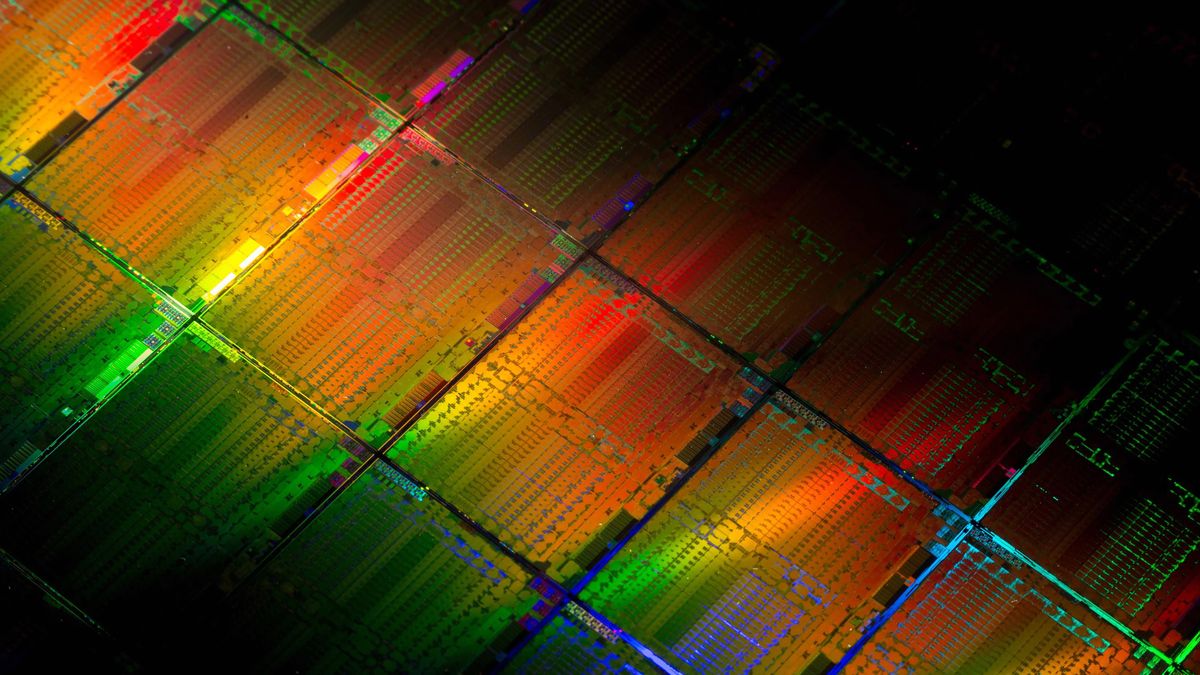Summary - Transformative AI and Compute
Modern progress in AI systems has been driven and enabled mainly by acquiring more computational resources. AI systems rely on computation-intensive training runs — they require massive amounts of compute.

This is the summary of the series Transformative AI and Compute - A holistic approach. You can find the sequence here and the links to the posts below:
- What is Compute? [1/4]
- Forecasting Compute [2/4]
- Compute Governance and Conclusions [3/4]
- Compute Research Questions and Metrics [4/4]
0. Executive Summary
This series attempts to:
- Introduce a simplified model of computing which serves as a foundational concept (Part 1 - Section 1).
- Discuss the role of compute for AI systems (Part 1 - Section 2).
- In Part 1 - Section 2.3 you can find the updated compute plot you have been coming for.
- Explore the connection of compute trends and more capable AI systems over time (Part 1 - Section 3).
- Discuss the compute component in forecasting efforts on transformative AI timelines (Part 2 - Section 4)
- Propose ideas for better compute forecasts (Part 2 - Section 5).
- Briefly outline the relevance of compute for AI Governance (Part 3 - Section 6).
- Conclude this report and discuss next steps (Section 7).
- Provide a list of connected research questions (Appendix A).
- Present common compute metrics and discuss their caveats (Appendix B).
- Provide a list of Startups in the AI Hardware domain (Appendix C).
Abstract
Modern progress in AI systems has been driven and enabled mainly by acquiring more computational resources. AI systems rely on computation-intensive training runs — they require massive amounts of compute.
Learning about the compute requirements for training existing AI systems and their capabilities allows us to get a more nuanced understanding and take appropriate action within the technical and governance domain to enable a safe development of potential transformative AI systems.
To understand the role of compute, I decided to (a) do a literature review, (b) update existing work with new data, (c) investigate the role of compute for timelines, and lastly, (d) explore concepts to enhance our analysis and forecasting efforts.
In this piece, I present a brief analysis of AI systems’ compute requirements and capabilities, explore compute’s role for transformative AI timelines, and lastly, discuss the compute governance domain.
I find that compute, next to data and algorithmic innovation, is a crucial contributor to the recent performance of AI systems. We identify a doubling time of 6.2 months for the compute requirements of the final training run of state-of-the-art AI systems from 2012 to the present.
Next to more powerful hardware components, the spending on AI systems and the algorithmic innovation are other factors that inform the amount of effective compute available — which itself is a component for forecasting models on transformative AI.
Therefore, as compute is a significant component and driver of AI systems’ capabilities, understanding the developments of the past and forecasting future results is essential. Compared to the other components, the quantifiable nature of compute makes it an exciting aspect for forecasting efforts and the safe development of AI systems.
I consequently recommend additional investigations in highlighted components of compute, especially AI hardware. As compute forecasting and regulations require an in-depth understanding of hardware, hardware spending, the semiconductor industry, and much more, we recommend an interdisciplinary effort to inform compute trends interpretations and forecasts. Those insights can then be used to inform policymaking, and potentially regulate access to compute.
Highlights per Section
1. Compute
- Computation is the manipulation of information.
- There are various types of computation. This piece is concerned with today’s predominant type: digital computers.
- With compute, we usually refer to a quantity of operations used — computed by our computer/processor. It is also used to refer to computational power, a rate of compute operations per time period.
- Computation can be divided into memory, interconnect, and logic. Each of these components is relevant for the performance of the other.
- For an introduction to integrated circuits/chips, I recommend “AI Chips: What They Are and Why They Matter” (Khan 2020).
2. Compute in AI Systems
- Compute is required for training AI systems. Training requires significantly more compute than inference (the process of using a trained model).
- Next to algorithmic innovation and available training data, available compute for the final training run is one of the significant drivers of more capable AI systems.
- OpenAI observed in 2018 that since 2012 the amount of compute used in the largest AI training runs has been doubling every 3.4 months.
- In our updated analysis (n=57, 1957 to 2021), we observe a doubling time of 6.2 months between 2012 and mid-2021 (n=45).
3. Compute and AI Alignment
- Compute is a component (an input) of AI systems that led to the increasing capabilities of modern AI systems. There are reasons to believe that progress in computing capabilities, independent of further progress in algorithmic innovation, might be sufficient to lead to a transformative AI[1].
- Compute is a fairly coherent and quantifiable feature — probably the easiest input to AI progress to make reasonable quantitative estimates of.
- Measuring the quality of the other inputs, data, and algorithmic innovation, is more complex.
- Strongly simplified, compute only consists of one input axis: more or less compute — where we can expect that an increase in compute leads to more capable and potentially unsafe systems.
- According to “The Bitter Lesson”, progress arrives via approaches based on scaling computation by search and learning, and not by building knowledge into the systems. Human intuition has been outpaced by more computational resources.
- The strong scaling hypothesis is stating that we only need to scale a specific architecture, to achieve transformative or superhuman capabilities — this architecture might already be available. Scaling an architecture implies more compute for the training run.
- Cotra's report on biological anchors forecasts the computational power/effective compute required to train systems that resemble, e.g. the human brain’s performance. Those estimates can provide compute milestones for transformative capabilities of AI systems.
4. Forecasting Compute
- For transformative AI timeline models with compute milestones, we are interested in how much effective compute we have available at year Y.
- We can break this down into (1) compute costs, (2) compute spending, and (3) algorithmic progress.
- Hardware progress: For forecasting hardware progress, no single model can explain the improvements of the last years. Instead, a mix of Moore’s Law, chip architectures, and hardware paradigms are applicable models and categories to think about progress.
- Performance improvements can happen significantly faster than the pure improvement in transistor count and density (Moore’s law) would indicate.
- We will see a fragmentation of applications into the slow and fast lane. High-demand applications will move to the fast lane by designing and benefitting from specialized processors. In contrast, low-demand applications will be stuck in the slow lane running on general-purpose processors. We should assume that AI will be on the fast lane.
- Economy of scale: There will either be room for improvement in chip design, or chip design will stabilize which enables an economy of scale. Our hardware will first get better and then get cheaper.
- Hardware spending: The current increase in spending is not sustainable; however, it could still significantly increase with estimates up to 1% of (US) GDP (a megaproject, like the Manhattan Project or the Apollo program).
- However, it is still unclear which percentage of the compute trend has been due to increased spending or to more performant hardware.
5. Better Compute Forecasts
- Researchers should share insights into their AI system’s training by disclosing the amount of compute used and its connected details.
- Ideally, we should make it a requirement for publications and reduce the technical burden of recording the used compute.
- For forecasting hardware progress, we can rely on conceptual models and categories of innovation. We can break this down into:
- Progress in current computing paradigms
- Economy of scale for existing technologies
- Introduction of new computing paradigms
- Unknown unknowns
- We should also monitor the dominant design strategy as this informs our forecasts. The three design strategies are (1) hardware-driven algorithm design, (2) algorithm-driven hardware design, and (3) co-develop hardware and algorithm.
- Metrics, such as FLOPS/$, often give limited insights, as they only represent one of the three computer components (memory, interconnect, and logic). Understanding their limitations is essential for forecasting.
6. Compute Governance
- Compute is a unique AI governance node due to the required physical space, energy demand, and the concentrated supply chain. Those features make it a governable candidate.
- Controlling and governing access to compute can be harnessed to achieve better AI safety outcomes, for instance restricting compute access to non-safety-aligned actors.
- As compute becomes a dominant factor of costs at the frontier of AI research, it may start to resemble high-energy physics research, where a significant amount of the budget is spent on infrastructure (unlike previous trends of CS research where the equipment costs have been fairly low).
7. Conclusions
- In terms of published papers, the research on compute trends, compute spending, and algorithmic efficiency (the field of macro ML research) is minor and more work on this intersection could quickly improve our understanding.
- The field is currently bottlenecked by available data on macro ML trends: total compute used to train a model is rarely published, nor is spending. With these, it would be easier to estimate algorithmic efficiency and build better forecasting models.
- The importance of compute also highlights the need for ML engineers working on AI safety to be able to deploy gigantic models.
- Therefore, more people should consider becoming an AI hardware expert or working as an ML engineer at safety-aligned organizations and enabling their deployment success.
- But also working on the intersection of technology and economics is relevant to inform spending and understanding of macro trends.
- Research results in all of the mentioned fields could then be used to inform compute governance.
Transformative AI, as defined by Open Philanthropy in this blogpost: “Roughly and conceptually, transformative AI is AI that precipitates a transition comparable to (or more significant than) the agricultural or industrial revolution.” ↩︎
